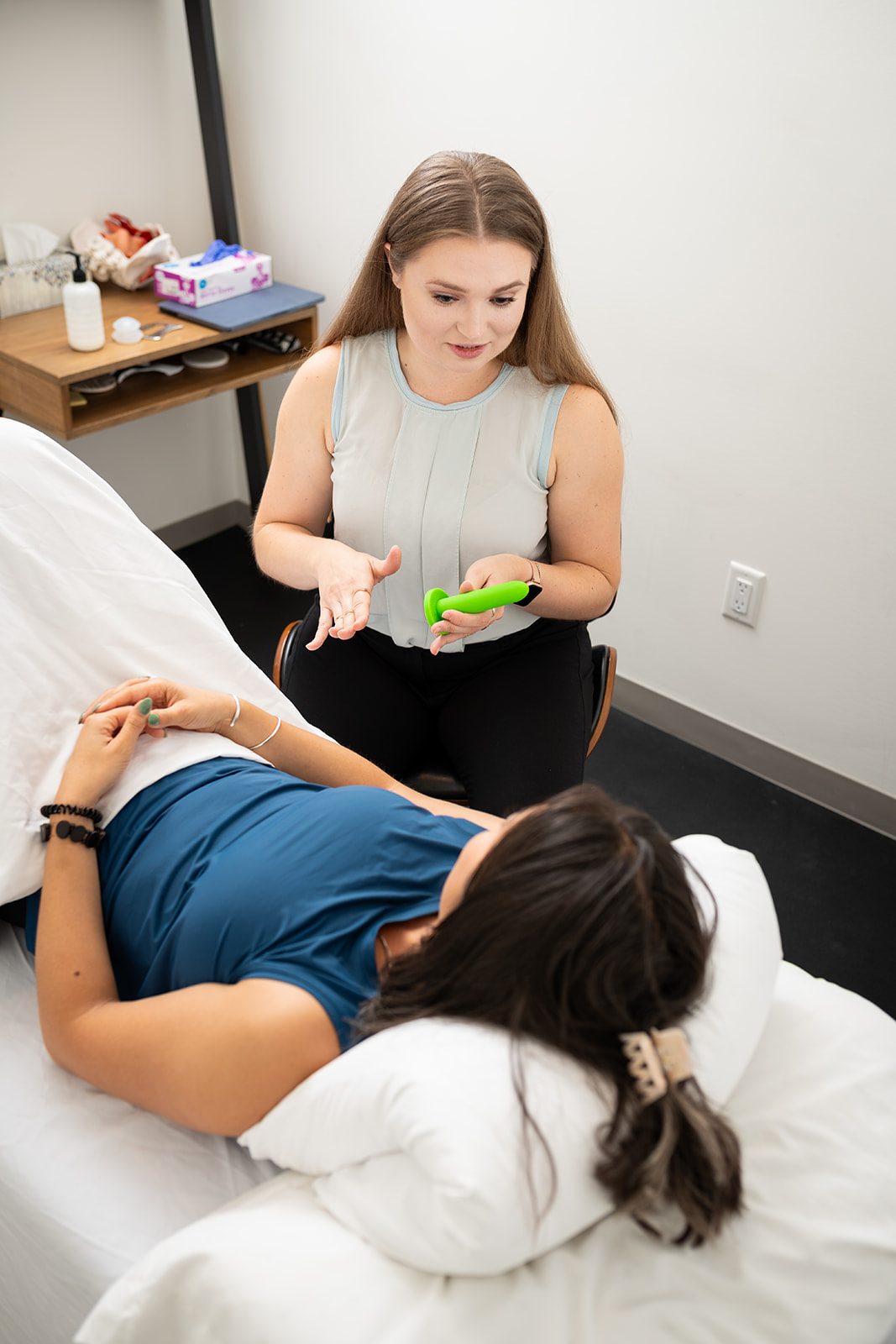Pregnancy is a remarkable journey! And although pregnancy should be pain-free, that’s sadly not always the case.
One common issue many pregnant women face and that we see often in our clinic is sacroiliac (SI) joint dysfunction. This condition can cause significant discomfort and pain, but understanding it better can help mitigate the symptoms effectively.
Read on to learn everything you need to know about pregnancy and SI joint pain (including how to get some relief).
What Is the Sacroiliac Joint?
The sacroiliac joint connects the sacrum, which is the triangular bone at the base of the spine, to the iliac bones of the pelvis.
There are two SI joints — one on each side of the lower back. These joints play a crucial role in supporting the weight of the upper body and providing stability when walking or standing. They also absorb the shock between the upper body and the legs.
Sacroiliac Joint Dysfunction in Pregnancy
During pregnancy, the body undergoes various hormonal and physical changes to accommodate the growing baby and prepare the body for a successful vaginal delivery. One of the key hormones involved is relaxin. Relaxin relaxes all of the ligaments in the body, but it affects the SI joint the most due to the pelvis’ role in childbirth.
However, if this increased mobility is not also paired with increased (muscular) stability, this can result in pain from too much movement within the joint, a condition known as sacroiliac joint dysfunction.
Although increased mobility in the SI joints is normal, the pain that is occasionally associated with it is not!
Symptoms to Watch For
Sacroiliac joint dysfunction typically manifests as pain in the lower back, hips, or buttocks. It’s usually only on one side.
The pain may be sharp or achy and can sometimes radiate down the legs. It’s often aggravated by activities where you’re supporting yourself on one leg (walking, climbing stairs, donning/doffing socks, shoes or pants), as well as transitions (standing up from a seated position, getting in and out of bed, getting in and out of a car). Some women may also experience a clicking or popping sensation over the joint.
How Physical Therapy Can Help
Physical therapy is an effective treatment for sacroiliac joint (SIJ) dysfunction (and also supporting your pregnancy and postpartum journey) because it addresses the underlying causes of pain. Here’s how:
- Strengthening exercises. The increased mobility in the joints needs to be matched with increased stability, which is accomplished with muscular strengthening. The most common areas to strengthen include the glutes and the low back muscles, since they immediately surround the SI joint. (Think: squats and glute bridges.)
- Stretching and flexibility. Although strengthening is the primary treatment strategy, if there are limitations to the range of motion in the spine, hips, ribs, or legs, then the muscles won’t be optimally strengthened. Full range of motion must be restored through stretching exercises. Common areas of movement restriction include the low back, inner thighs, and pelvic floor muscles.
- Manual therapy. Hands-on techniques, such as soft tissue mobilization, help increase mobility to muscles that are overactive or joints that are less mobile.
- Postural training. Posture, body mechanics, and ergonomics affect the SI joint. Physical therapists work with patients to correct posture, ensuring that daily movements, like sitting, standing, and lifting, are done in ways that minimize stress on the SI joints. This includes advice on dressing, sleeping positions, lifting techniques, and transitioning in and out of chairs.
- Pain relief techniques. Physical therapists may also use and recommend modalities such as heat, ice, dry needling, or electrical stimulation to help reduce pain in and around the SI joints.
Tips to Try in the Meantime
- Sit down to dress. Standing on one leg puts a lot of pressure through the SI joint, which can exacerbate your symptoms. To put on or take off your socks or shoes, sit down. To put on pants, start seated and get both legs through the pant legs, then stand up to finish donning them. Do the reverse to take them off.
- Split stance instead of single leg. It’s important to continue strengthening your lower body during your pregnancy. Although symmetrical movements (squats and deadlifts) are great, it’s good to also focus on each leg individually. Since standing on one leg can be uncomfortable, opt to be in a split stance to keep both legs on the ground throughout the duration of your exercises. (Think: split stance deadlift instead of a single leg deadlift.)
- Support belts. Wearing a pregnancy support belt can help to stabilize the pelvis and reduce the strain on the SI joints.
When to Seek Help
If you’re experiencing any pain during pregnancy, consult with your healthcare provider and work with a physical therapist.
Again, pregnancy should be pain-free! Early intervention can help manage the symptoms, prevent them from worsening or carrying over postpartum, and improve your overall pregnancy experience.
Remember, each pregnancy is unique. At Pacer Physical Therapy, we are here to assist in coming up with a game plan, help you feel empowered and confident with movement, and support you throughout your journey to a pain-free pregnancy and beyond.
To learn more or work with us, book a complimentary discovery call today!
You got this!
– Vera





